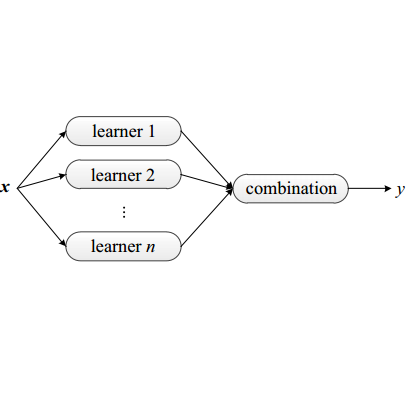In today's modern world, the usage of technology is unavoidable and the rapid advances in the Internet and communication fields have resulted to expand the Wireless Sensor Network (WSN) technology. A huge number of sensing devices collect and/or generate numerous sensory data throughout time for a wide range of fields and applications. However, WSN has been proven to be vulnerable to security breaches, the harsh and unattended deployment of these networks, combined with their constrained resources and the volume of data generated introduce a major security concern. WSN applications are extremely critical, it is essential to build reliable solutions that involve fast and continuous mechanisms for online data stream analysis enabling the detection of attacks and intrusions. In this context, our aim is to develop an intelligent, efficient, and updatable intrusion detection system by applying an important machine learning concept known as ensemble learning in order to improve detection performance. Although ensemble models have been proven to be useful in offline learning, they have received less attention in streaming applications. In this paper, we examine the application of different homogeneous and heterogeneous online ensembles in sensory data analysis, on a specialized wireless sensor network-detection system (WSN-DS) dataset in order to classify four types of attacks: Blackhole attack, Grayhole, Flooding, and Scheduling among normal network traffic. Among the proposed novel online ensembles, both the heterogeneous ensemble consisting of an Adaptive Random Forest (ARF) combined with the Hoeffding Adaptive Tree (HAT) algorithm and the homogeneous ensemble HAT made up of 10 models achieved higher detection rates of 96.84% and 97.2%, respectively. The above models are efficient and effective in dealing with concept drift, while taking into account the resource constraints of WSNs.
翻译:在当今现代世界,技术的使用是不可避免的,在97个现代世界中,技术的使用是不可避免的,互联网和通信领域的快速进步导致扩大无线传感器网络(WSN)技术。大量遥感设备收集和(或)生成大量感官数据,用于广泛的领域和应用。然而,WSN被证明容易发生安全破坏,这些网络的部署严酷和无人看守,加上其有限的资源和生成的数据量,引起了严重的安全关切。WSN应用极为关键,必须建立可靠的解决方案,包括建立快速和连续的在线数据流分析机制,以便检测攻击和入侵情况。在这方面,我们的目标是开发一个智能、高效和升级的入侵探测系统,为此应用一个被称为“连通学习”的重要机器学习概念,以提高探测性能。尽管事实证明,这些网络的堆积模型在离线学习中非常有用,但在流应用中却受到较少注意。在本文件中,我们考察了在感应数据流数据流分析中应用不同同和混杂的网络内联式网络,在SBAR-NDRIS数据分析中,在S-S-Nral AS-deal AS AS AS AS AS-dealder AS-deal sal sal AS-de sal laveal laction sal laveal laveal laction serveal laveal netmal netmal sy sy sy sy sy sy sy sy sy sy sy sy sy sy salmalmal commal commalmalmalmalmalmalmalction laction lactionsmal lactionsmal laction lactions lactions lactions lactions lactions lactionsal lactions lad lad lad lactions lactions lactions laction lactions lactions lactions lactions lactions lad lad lactions lad lad lad lad lad lad lad lad lad ladal lad lactions lad lad lad lad




